Facebook Measurement: Top 10 Metrics To Track To Measure Campaign Success

Today, Facebook isn’t a place to send pokes or play FarmVille anymore.
In the 20+ years since its inception, Meta has changed its name and grown into a bustling digital marketplace and ad network with WhatsApp, Instagram, Threads, and Facebook Messenger. It’s also an important marketing channel for any business looking to sell more, engage with its audience network, and reach new customers.
In this guide, we’ll show why Facebook still belongs in your marketing strategy, how to measure your ad performance on Facebook, and an easy way to report important Facebook metrics in minutes with DashThis.
- 3 reasons why marketers use Facebook
- Top 10 Facebook KPIs to measure your campaign’s success
- How to create a Facebook report with DashThis
- Report templates to measure your Facebook performance
- Tips to improve your Facebook marketing performance
- Automate your Facebook measurement reporting with DashThis
3 reasons why marketers use Facebook
Facebook is the most used social platform worldwide
Facebook has over 2.9 billion monthly active users and a 20% market share of the US digital advertising market, only behind Google.
That’s a population of Facebook users that’s more than eight times the population of the United States and more than half of the 5.4 billion global internet users.
In short, a lot of people are active on Facebook. With a potential reach of 2.2 billion users with Facebook ads, it’s possible to find new customers or expand your audience using the platform.
Granular targeting capabilities to pinpoint your exact audience
According to DataReportal’s 2024 report, people mostly spend time on Facebook to message friends and family. Even B2B marketers can use Facebook paid social, ranking second after LinkedIn in social media engagement for B2B marketers, according to a Sagefrog report.
Facebook offers multiple ad targeting options for you to mix and match to find an audience that matches your ideal customer profile, like:
- Lookalike audiences to find people similar to your top customers
- Remarketing to reach previous customers or visitors
- Demographic, interest, and behavioral targeting options
For example, you could be a small local coffee business looking for coffee enthusiasts looking for people who recently got married for an upcoming Valentine’s Day promotional offer. Here, Facebook offers the tools you need to find a specific audience likely to engage with your offer.
Easy to measure performance and ROI
Facebook’s ads manager includes robust native analytics for you to track your campaign performance and other Facebook ad metrics. Ever wonder what content you should post on your Facebook page or how to improve your Facebook advertising?
Chances are, there’s a metric in the Meta business suite platform that can help you answer that question
But which key metrics should you track on Facebook, and why? Read on for our recommendations.
Top 10 Facebook KPIs to measure your campaign’s success
1. Reach
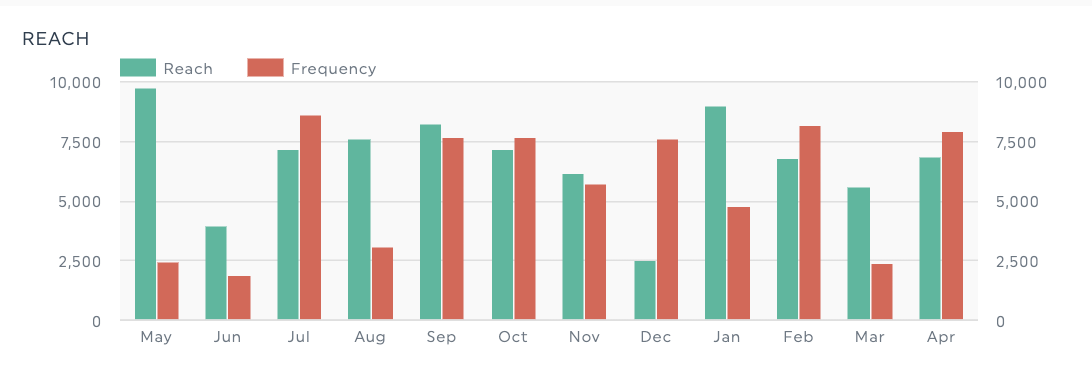
This metric tells you how many unique users have seen your Facebook ads or page reach - whether it’s displayed in their News Feed, on your page, seen on a story, or as an ad.
Monitor this metric if you need to know the number of people seeing your content or if you’re delivering ads sufficiently to your target audience.
2. Social interactions (likes, comments, shares, saves)
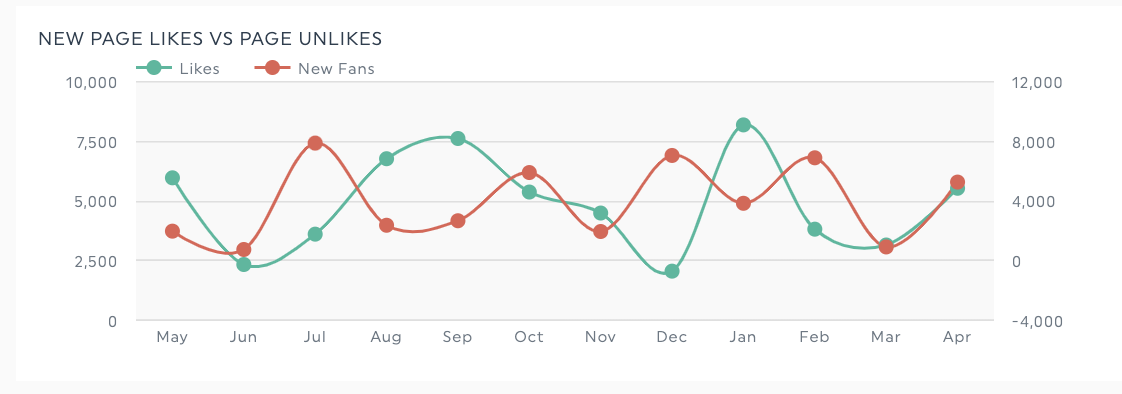
Are people interacting with your Facebook page content? These social media engagement metrics tell you if people find your content engaging and whether you need to adjust your social media content strategy. Keep an eye on these metrics if you use Facebook as a social media platform to connect with your customers or as a brand awareness channel.
3. Impressions

Impressions measure the number of times people see your Facebook content. These can be divided into two subcategories.
Impressions count each time a person sees your Facebook posts, unlike reach. Let's say one person views your Facebook posts five times - that's counted as one person reached and five impressions.
4. Engagement rate
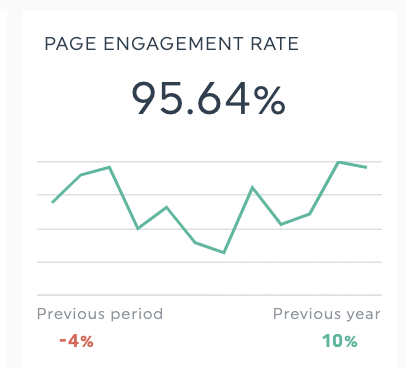
Facebook calculates social media engagement rates as a percentage, so you’ll always know if your page audience interacts with your content. It’s also a valuable metric to report on content performance, regardless of whether you have 100 followers or 100,000.
Formula to calculate engagement rate: Total engagement (clicks, likes, shares, comments, etc.) / total number of followers
5. Click-through rate

Click-through rate measures how often people click on your ad to go to your landing page, offer, or website. It’s a great measure of ad relevancy or how engaging your ad content is for your target audience.
Click-through rate formula: (Link clicks / Impressions) 100
6. Cost-per-click (CPC)

CPC measures the average cost of your Facebook ad campaigns (or boosted posts). Monitor CPC to monitor your marketing spend and forecast the amount you spend on paid Facebook campaigns.
7. Conversion rate
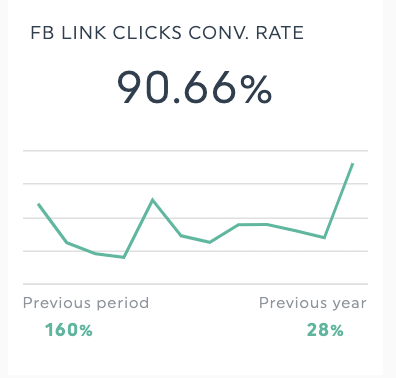
Conversion rate is a direct measure of how effective your marketing is at turning more of your existing visitors into customers or clients. It’s useful to track if you’re working on conversion rate optimization initiatives or A/B testing different elements of your Facebook campaigns.
Conversion examples:
- Successfully submitting a form for a free trial
- Buying something on an e-commerce store
- Signing up for an email newsletter
8. Cost per conversion

Another metric used to calculate Facebook ad spend is cost per conversion, which calculates how much you spend when people take a desired action, such as submitting a form or downloading a content offer. Monitor cost per conversion closely to ensure your paid Facebook campaigns remain profitable.
Cost per conversion formula: Total Campaign Cost / Number of Conversions.
9. Cost per acquisition (CPA)
Cost per acquisition calculates how much you spend on Facebook advertising to acquire a new customer. Keep this metric in your reporting dashboard when measuring your Facebook ad campaign ROI.
10. Video views
Video content is a powerful way to help people understand your client’s product or service and drive brand awareness. Track video views to understand if your video marketing campaigns and content are engaging your target audience.
How to create a Facebook report with DashThis
Get started with DashThis's 15-day free trial and follow this guide to create a Facebook report in minutes.
Step 1: Create a new dashboard
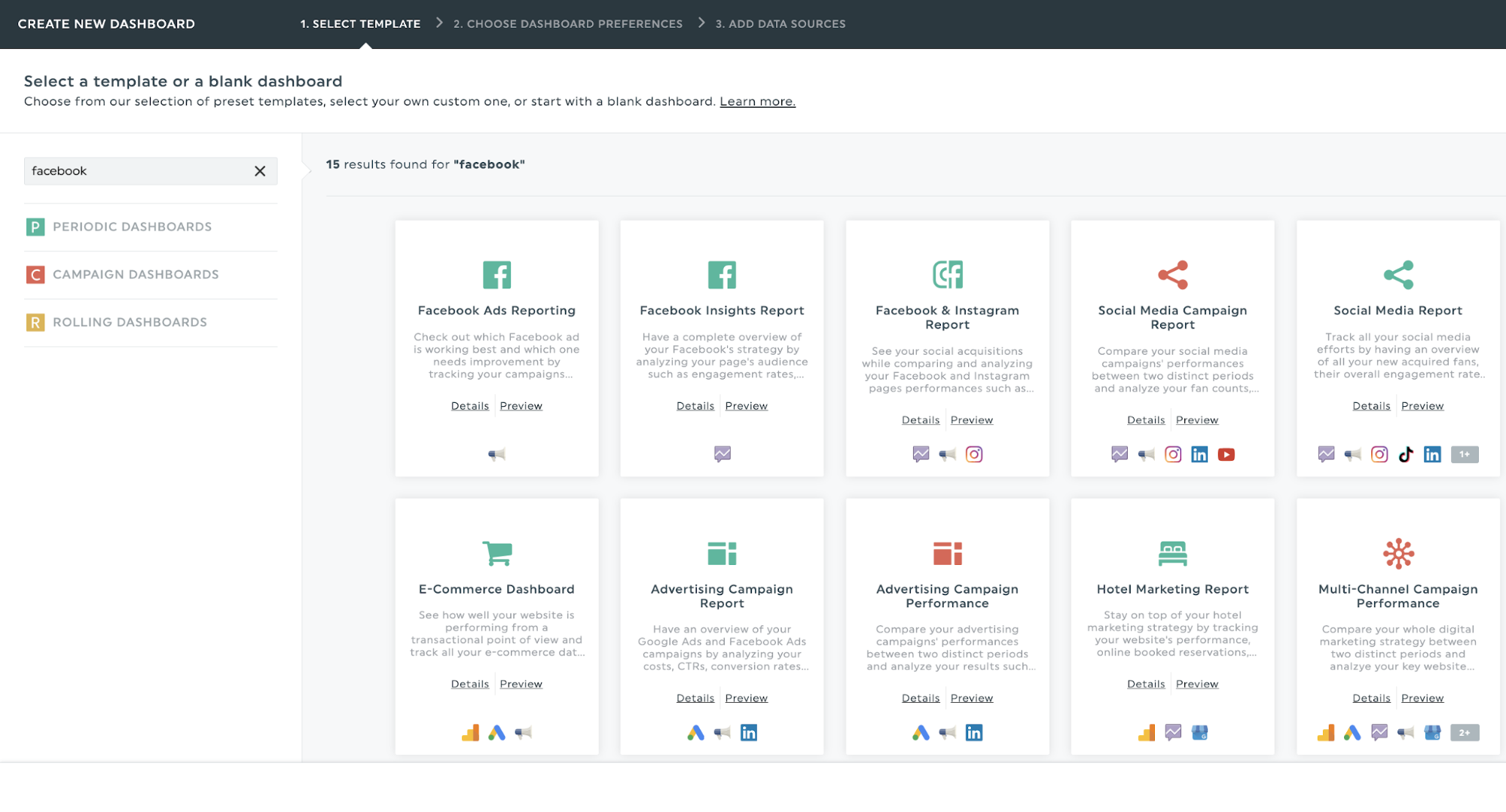
Start with one of DashThis’s dashboard templates, or create a new dashboard from scratch.
Step 2: Connect your Facebook account to DashThis
First, ensure you have at least an Analyst role in your Facebook Page account to connect Facebook Insights to DashThis.
Once you have the permissions, connect your Facebook account with DashThis’s native integrations. You’ll automatically import your Facebook data into your DashThis account.
Step 3: Select and organize your desired KPIs
Our report templates already include the most critical KPIs for efficient Facebook reporting, but adjust your report according to your reporting goals. Want to focus on Facebook ROI reporting? Include an ad account-level summary for a quick overview and a widget to compare your ROI metrics across campaigns.
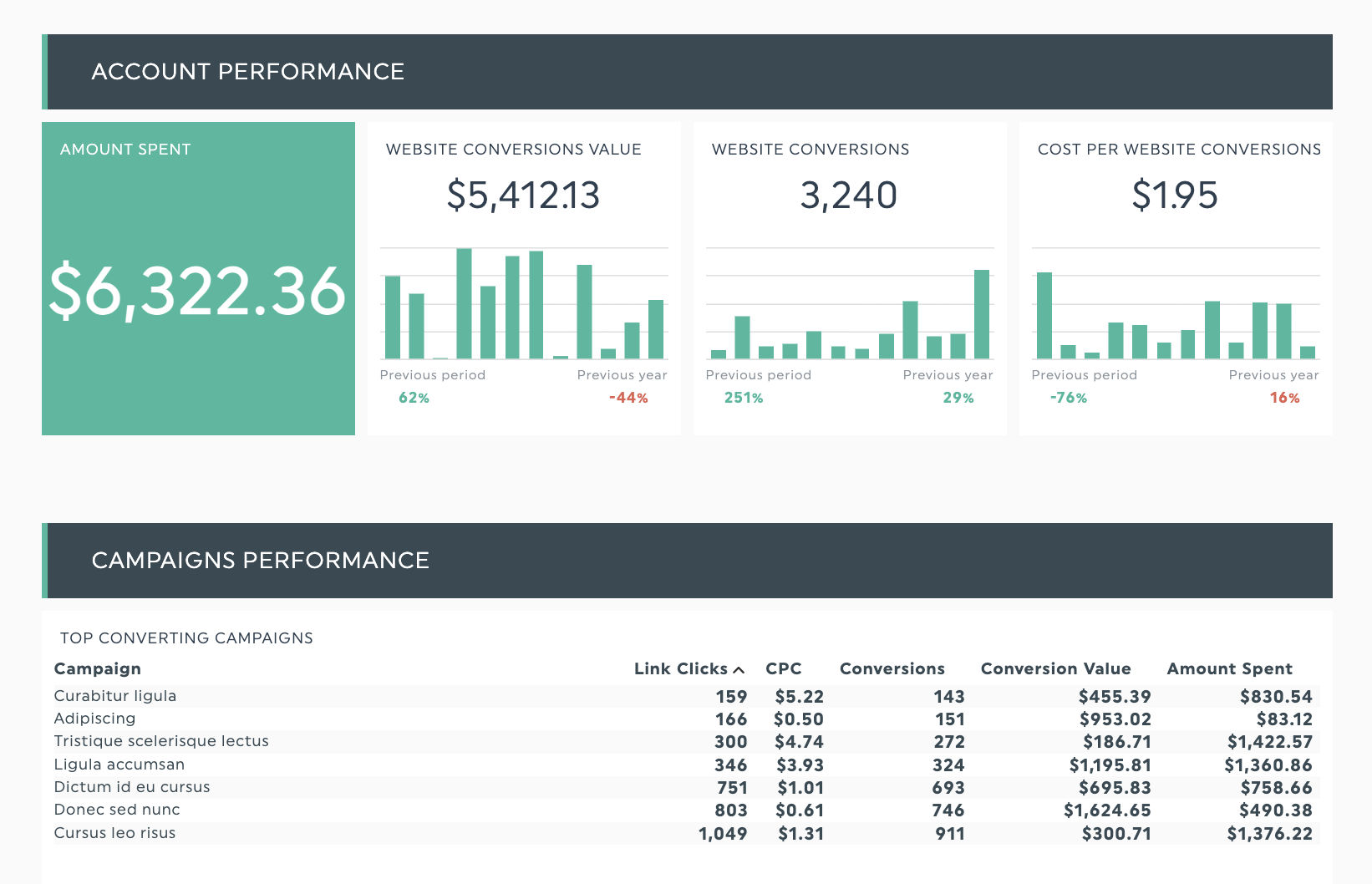
Or are you trying to compare the performance of different ads to identify candidates for A/B testing? Use a table widget to get your metrics in one place.

DashThis’s customizable layouts also help you drag and drop your KPI metrics into a format that enables you to communicate your results clearly.
Read more: 100+ KPI examples for your next Facebook report.
Step 4: Share your Facebook report with your client or stakeholder
Share your Facebook report with your clients or stakeholders with DashThis’s simple sharing options.

- Share by email: Never miss a regular client report again with DashThis’s automated report scheduling.
- Share a link: It's perfect if you’re preparing for an in-person or video conferencing meeting. Your clients can use the link to review your metrics regardless of where they are
- Export as PDF: If your clients prefer reviewing files offline or for you to upload to a dedicated client folder
Report templates to measure your Facebook performance
Short on time and need a ready-to-go template for your upcoming Facebook review session? We’ve got you covered. These two report templates are fully customizable, so you can drag and drop metrics, reorder sections, and white-label them.
Facebook Insights report template
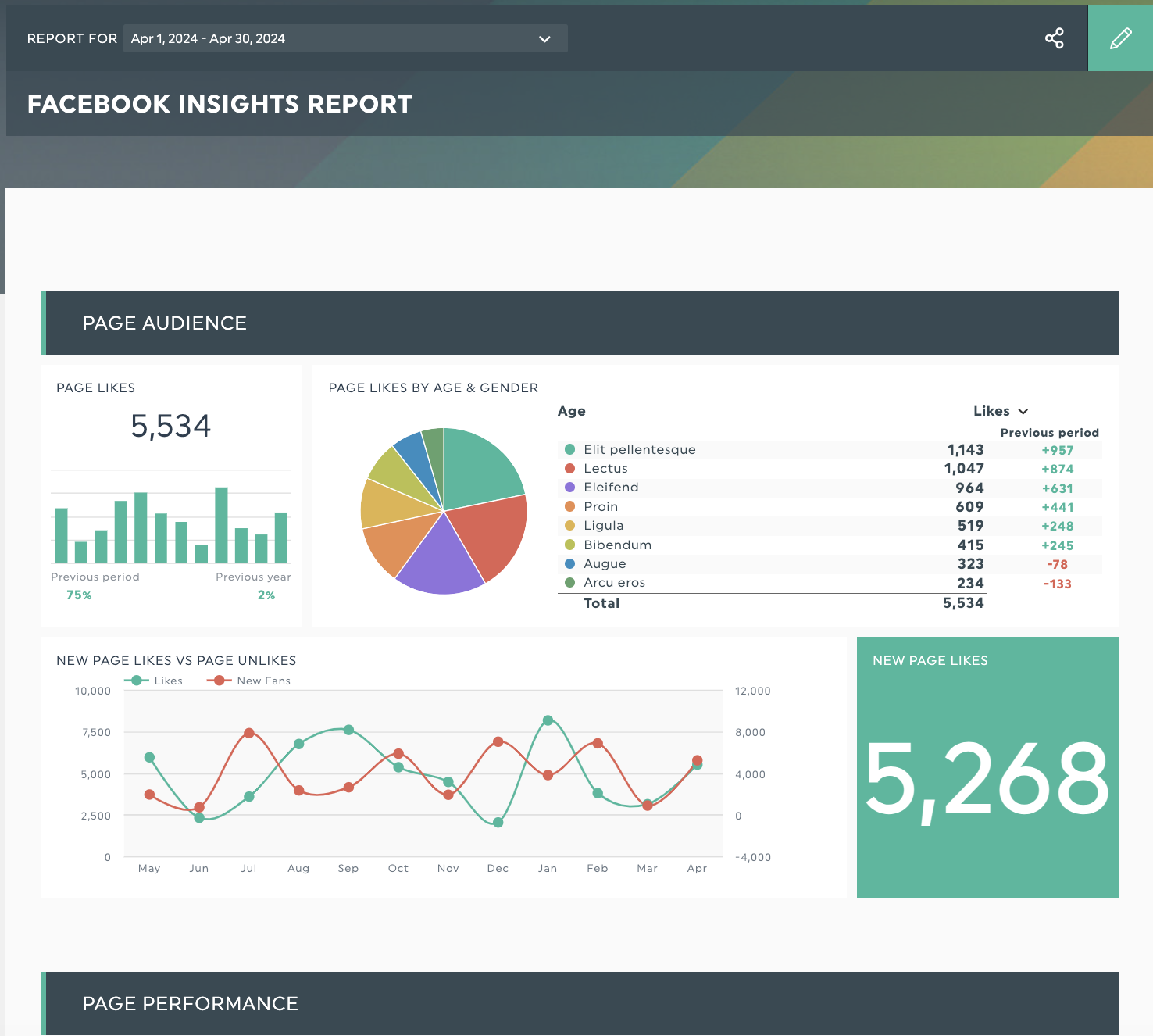
Get this Facebook Insights reporting template with your own data!
This reporting template is a must-have for social media marketing managers who want to see and share their Facebook page performance data in one place. It has dedicated sections to monitor and analyze overall page performance and individual posts, which helps make more informed marketing decisions.
Facebook Ads report template

Get this Facebook ad reporting template with your own data!
While DashThis’s Facebook insights report focuses on social media content and organic reach, use this Facebook Ads report template to review your paid Facebook efforts. Once you’ve found a combination of integrations and KPIs you want to reuse for future reports, save even more time by keeping the dashboard you’ve just completed as a template!
Tips to improve your Facebook marketing performance
Define clear campaign objectives
What do you want to get out of Facebook?
Where do Facebook content and ads fit your marketing strategy? For example, if you’re on Facebook to help drive sales for your e-commerce business, you could set a SMART goal and choose the right goal metrics like:
- Specific: Increase our T-shirt sales by 25% monthly with Facebook ads from our e-commerce store in the next six months
- Measurable: Number of T-shirt sales, Facebook ad conversions
- Achievable: Our benchmark growth rate is at 10% at our current level of investment. 25% is doable by increasing paid marketing spend
- Relevant: There’s demand for our T-shirts we aren’t capturing at the moment
- Timely: 6 months is a reasonable time period to test the efficiency of Facebook ads
Combine Facebook targeting options to reach a specific customer profile
Intentional targeting helps focus your marketing efforts on the people most likely to convert. It makes your ad campaigns more effective while lowering campaign costs.
Questions to ask yourself:
- What do your ideal customers have in common?
- Who will be interested in your product or service?
- Who are my competitors trying to reach?
Once you’ve identified your ideal customer's characteristics, use Facebook’s targeting options to focus on your target audience. For example, location-based targeting is good for local businesses serving a specific area to find people living in or recently in the selected location. In contrast, demographic targeting could help you drive interest in new customers who share common characteristics with your current customers.
Create compelling ad copy and visuals
According to Meta’s ad best practices, compelling ads have the following characteristics:
- Entertaining: Compelling ads include visual effects, movement, storytelling, and music to enhance their message
- Relatable: Spontaneous, unpolished content that’s relatable can work better than overly-polished branded videos
- Clear branding: Features recognizable brand elements clearly throughout the ad
- Follows framing best practices: Follow the correct aspect ratio for your ad format and feature your brand within the first 3 seconds of a video ad.
For example, Samsung Netherlands used these tips to create a brand awareness ad creative that outperformed its other ad creatives.
Need more ad inspiration? Meta’s Creative Centre has a well-documented repository of Facebook ad best practices and references to inspire your next campaign.
A/B test different content formats and Facebook page elements
While A/B testing is usually applied to improve Facebook ad campaign performance, it also applies to social media content. Test different elements in your post like:
- Post text: caption length, style, casual or a more formal tone
- Call to action copy
- Creative
- Content or ad format
Monitor and adjust campaigns based on performance data
Facebook campaigns provide multiple metrics you can monitor to understand your campaign performance.
Besides KPIs like ad quality, engagement rates, and conversion rate, monitor Meta’s ad relevance diagnostics for more insights if you need to adjust any aspect of your Facebook ad campaigns.
Use DashThis’s reporting features to get an overview of your campaign KPIs and how your Facebook campaigns compare with other channels in your marketing strategy.
Automate your Facebook measurement reporting with DashThis
Facebook is an intricate ad network and social media content platform, and it takes time and effort to get the most out of your Facebook content. Give DashThis a try and save time on manual reporting.
Ready to measure your Facebook campaigns?
Read More
Don’t miss out!
Automate your reports!
Bring all your marketing data into one automated report.
Try dashthis for free

